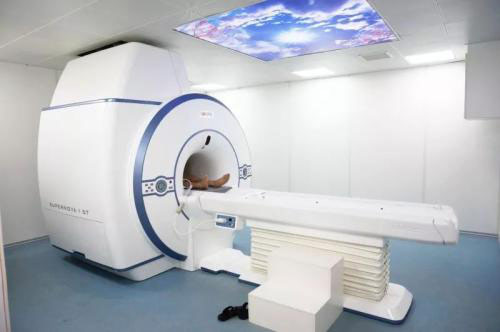Researchers led by Profesoor Raphael Stoll hope that their results will form the basis of future treatment strategies to combat cancer caused by HMGA1a. They were reported on July 24, 2019 in the journal Nucleic Acids Research.

Although the correct function of many proteins depends on their three-dimensional structure, some seem to adopt a random form. For one of them, a group of researchers at the Ruhr University of Ruhr (RUB) showed that the so-called disease is not disordered after all: the protein HMGA1a adopts a dynamic, more compact structure that depends on its phosphorylation. Dysfunction of HMGA1a can lead to cancer. Researchers led by Profesoor Raphael Stoll hope that their results will form the basis of future treatment strategies to combat cancer caused by HMGA1a. They were reported on July 24, 2019 in the journal Nucleic Acids Research.
Many, but not all, of the proteins in living cells have a defined three-dimensional structure, which is absolutely necessary for their correct activity. The interrelationship between protein structure and function is the focus of many research programs that extend to the development of innovative drugs.
At least 30% of all proteins are unstructured
“However, according to recent research, at least 30% of the protein in cells containing nuclei is expected to be partially or even completely unstructured,” said Raphael Stoll, head of the biomolecular spectroscopy research group. Despite or precisely because of this remarkable feature, these proteins have special, sometimes critical, functions in both health and disease processes. These include, for example, regulation of the cell cycle, transmission of biological signals, and development of cancer or neurodegenerative diseases such as Alzheimer’s disease or Parkinson’s disease.
One of these seemingly disordered proteins is the high mobility group protein A1a (HMGA1a). It is highly abundant in the nucleus, is important for embryonic development, cell differentiation, and is also involved in the development of uncontrolled cell proliferation, called neoplasia.
First full-length structural model
For the first time, the Bochum-based research team successfully demonstrated that the HMGA1a protein does not use a completely random form, but a dynamic, more compact structure. This allowed researchers to create the first full-length structural model of the HMGA1a protein.
They are also able to describe the structural effects of HMGA1a protein phosphorylation on its function. Phosphoryl linkages alter the function of many proteins, so they are turned on or off. Phosphoryl groups can also affect the ability of proteins to bind to other cellular components. HMGA1a binds to DNA. This process is very important for its biological mode of action, as HMGA1a, for example, is involved in the regulation of RNA formation and recombination of chromosomes.
Structural and binding probabilities change
The researchers applied nuclear magnetic resonance spectroscopy, which not only provides information about protein structure, but also provides protein dynamics information. “Our results suggest that the dynamic and tight structure of this protein depends on its phosphorylation status,” Raphael Stoll reports. Within the cell, the HMGA1a protein is phosphorylated by casein kinase 2. This has an effect on the electrostatic network in the HMGA1a protein, thus altering the dynamic structure of the protein as a whole. Further experiments have shown that these changes even affect the ability of the HMGA1a protein to bind to native target sequences in nuclear DNA.
 NIUMAG
NIUMAG